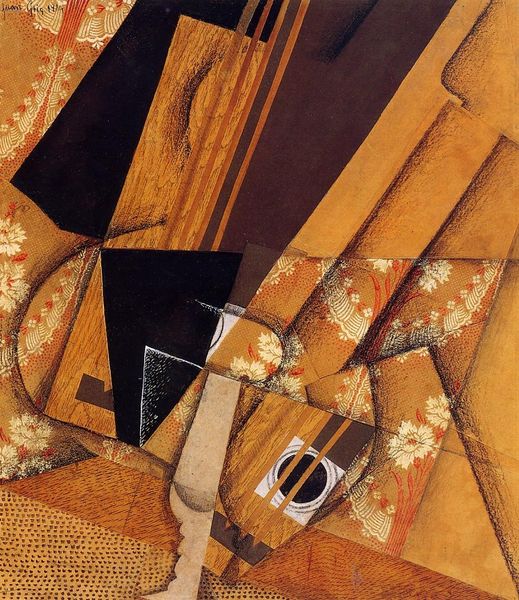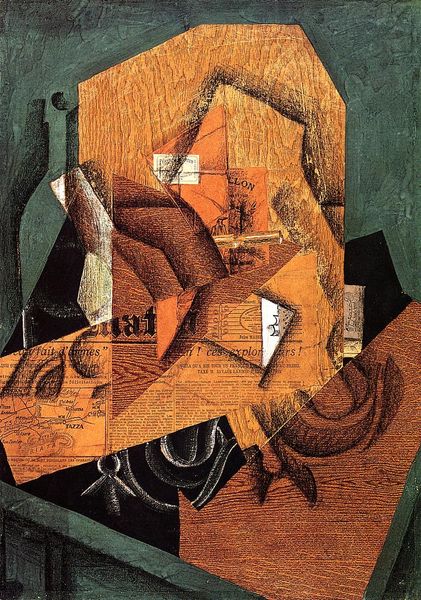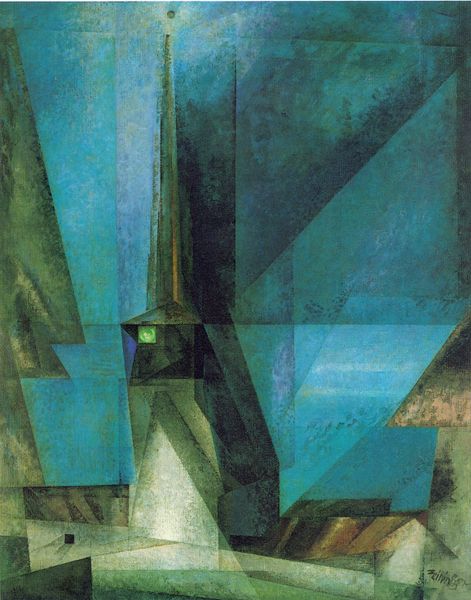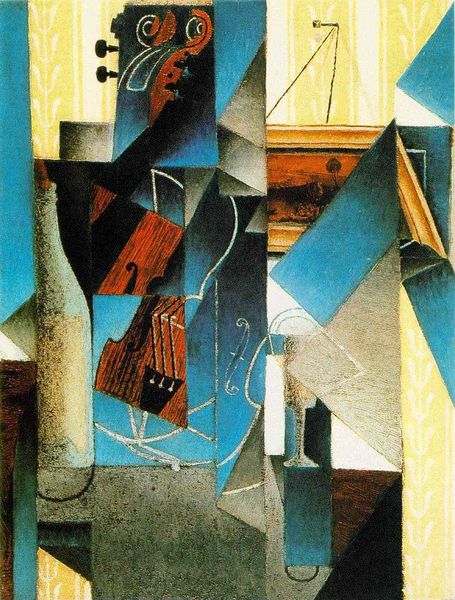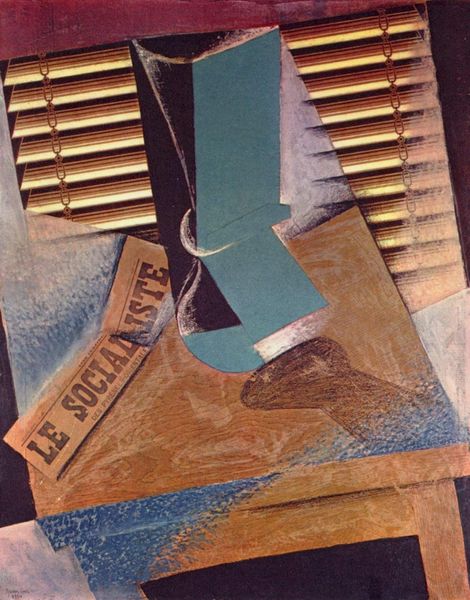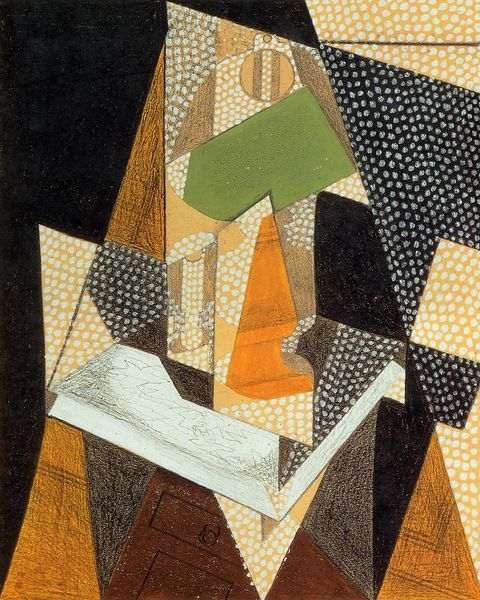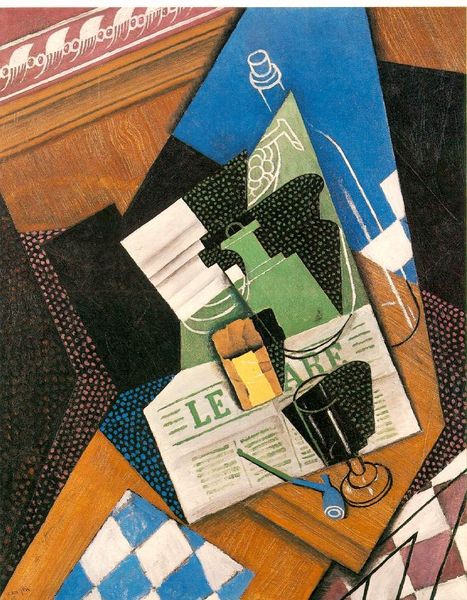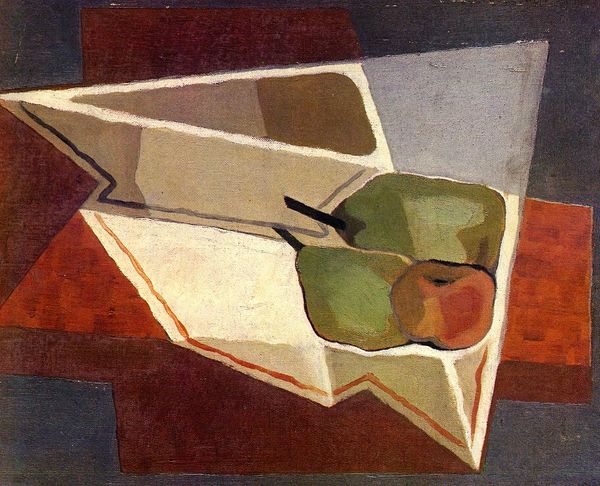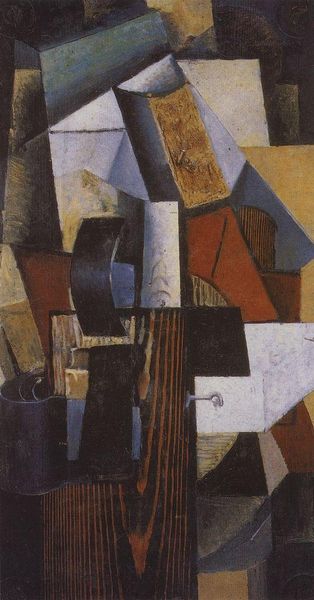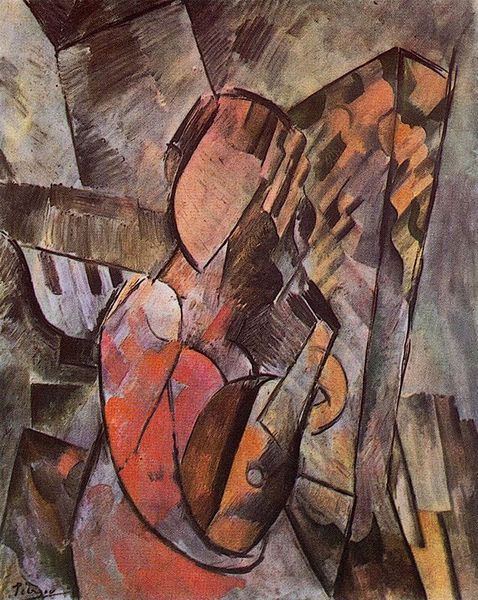
oil-paint
#
cubism
#
oil-paint
#
oil painting
#
geometric
#
mixed media
#
modernism
Copyright: Public domain
Curator: Let's explore "The Violin," a Cubist oil painting realized around 1914 by Juan Gris. Immediately I'm noticing the muted color palette and those geometric, almost architectural forms—it presents a stillness, almost melancholy to my eye. Editor: Melancholy, that's it! I was struggling to place the feeling. It's as if Gris has trapped the soul of music inside these angular fragments. What's particularly interesting to me is the use of symbols, such as how musical instruments, like the violin here, have been represented in art over centuries. Can we unlock what he wants us to consider? Curator: Undoubtedly, symbols resonate deeply. Gris deconstructs the familiar form of the violin—a traditional symbol of harmony—presenting it through fractured planes and distorted perspectives. We recognize it as a violin, but also as something more conceptual. There is the breakdown, the loss—a commentary perhaps on the changing landscape of art and perception in the early 20th century. Editor: The painting feels like a memory, perhaps even an illusion of one. I wonder, what of melody and coherence? Could we imagine the sound escaping this broken vessel? Curator: I imagine so. Perhaps Gris is also pointing to a new harmony—one born out of disruption and abstraction. Notice how he uses different textures, the interplay between the solid dark elements against the lighter hues. They add complexity to what at first appears a fairly simple composition. Editor: I agree. The subtle shifts create an incredible richness. Ultimately, it has opened something that seems hidden beneath those formal layers—a whole vista of emotion and implication is opened. Curator: Well said!
Comments
No comments
Be the first to comment and join the conversation on the ultimate creative platform.
